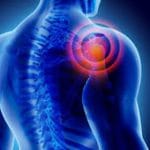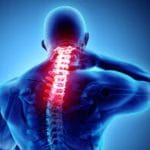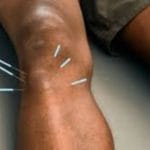By Mr. Javier Waterman, Registered Physiotherapist
What is Pain?
Pain starts in receptor nerve cells found beneath the skin and in organs throughout the body. These receptor cells send messages along nerve pathways to the spinal cord, which then carries the message to the brain. Pain can range anything from a slightly bothersome mild headache, to chest pain that accompanies a heart attack. Pain is typically classified in three categories: acute, meaning new, subacute, lasting for a few weeks or months, and chronic, when it lasts for more than 3 months.

Chronic Pain
Chronic pain is pain that has been present for greater than 12 weeks. You may feel the pain constantly or it may be intermittent. It can happen anywhere in your body and has countless causes. Chronic pain is a very common condition and one of the most common reasons why people seek medical care. About 20.9% of U.S. adults (51.6 million people) experienced chronic pain, according to a 2021 CDC study. Pain is your body’s way of telling you that something’s wrong, like an alarm. But when that alarm continues to go off for months or years, it can drown out many aspects of life that bring you joy. And it can take quite a toll on your physical, mental and emotional health.

Often, pain occurs when there is little or no tissue damage. Why is the pain lasting long after the tissues are healed? Why are medicines not effective in treating your pain? Is there something really wrong? These questions may be difficult to answer, and finding the best treatment for your chronic pain may be equally difficult.
Ways in which Physiotherapy can help
When you attend physiotherapy for chronic pain, you may experience various treatments that may be used to decrease pain, improve your mobility, and help you fully function. Common treatments used by physiotherapists for chronic pain patients include:
-
Exercise- can help your body improve strength and mobility. Think of exercise as a feedback loop. Your brain moves your body, so exercise is output coming from your brain. When you can move with little or no pain, you are reinforcing to your brain that the movement is not going to hurt. This positive feedback allows you to move more with less pain. Therefore improving mobility, trains your sensitive nervous system to trust that the movement is safe.
-
Ultrasound- is a deep heating modality that you may encounter while in physiotherapy. It is applied to your skin and as your body’s tissues are heated, it is thought that this improves circulation and blood flow. Ultrasound Increases your pain threshold, Increases blood flow and relieves muscle spasm-through effect on gamma fiber activity

-
TENS and Electrical Stimulation- Transcutaneous electrical nerve stimulation (TENS) is a therapeutic modality that uses electricity to decrease pain signals coming from your body to your brain. TENS changes sensitivity of peripheral receptors or free nerve endings responsible for transmitting nociceptive (pain) stimuli. TENS enhances blood flow and results in increased oxygenation and elimination of waste such as pain metabolites

-
Massage: Some physiotherapists employ massage techniques to decrease pain by improving muscular blood flow and relieving tightness.
-
Heat or Ice: Modalities like heat and ice are often used by physiotherapists to help decrease pain and inflammation. Muscles are relaxed through the effect on gamma fiber activity. Pain is relieved through counter-irritant effect and relief of spasm
-
Dry Needling- is a newer treatment employed by some physiotherapists to decrease painful muscle knots and trigger points. This treatment involves using small needles (such as acupuncture needles) to pierce muscle tissue and knots, relieving the pain in these spots.

-
Pain Neuroscience Education (PNE)- teaching patients about their pain and why it is happening can have a positive effect on their rehab. Your physiotherapist may spend time teaching you about why you have pain, how your pain might behave, and things you can do to take control of your pain.


Leave a Comment